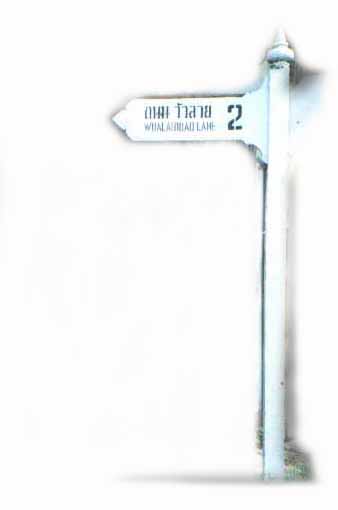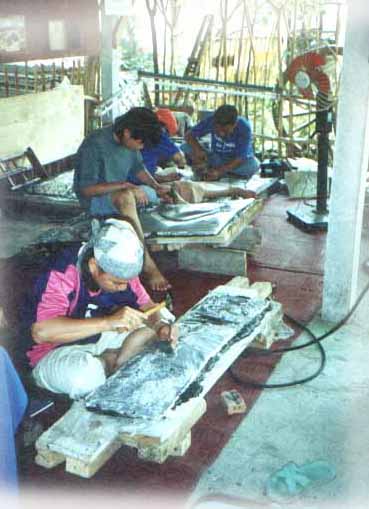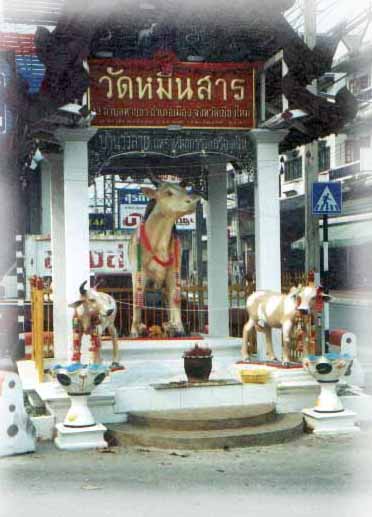|

Dating back to the past, most of the households
along both side of Wualai road are well known - it was Chiang Mai's first local silverware industry.
At present, the changing of time had brought modernization
to the old way of life...but many on this road are dedicated to the preservation of their cherished silverware making.
Last weekend I had time to wander around the Wualai road area,
exploring Chiang Mai's famous silversmith village. I strolled along the footpath passing by several shops selling silverware.
For a decade now, new commercial buildings have been constructed,
replacing the old style shop houses. Fortunately you can still see a few old wooden houses along both sides of the road, although
most of them have been ravaged by time.
For nearly a century, the silversmiths on Wualai road have
been creating very fine silver ware, making Chiang Mai the number one silver shopping centre. Originally, people of various
races migrated to this region and established a settlement in Chiang Mai, which they named Wualai in remembrance of their
hometown in the Shan State of Burma where most of the artisans came from.

At that time Chiang Mai was an economic centre of the Lanna
Kingdom. Silver was valuable, being used for barter and it once symbolized the wealth of the Kingdom. The Thai Yai (Shan)
people were very skilled at carving and making silver ware. The artistic silver designed in Wualai village is characterised
by the combining of the Lanna and Shan designs also found in cotton and curtain.Several shops on Wualai road have their own
fascinating atmosphere of Chiang Mai's early period.
I saw an old fashioned showcase with sliding doors that displayed real silver products; silver bowls boxes, picture frames, belts, bracelets,
necklaces and much more.
I was very impressed with the lovely wooden fretwork sign
that hung over the entrance door. I met an old man who was
once the shop owner - now he has handed over the business to his son.
"I knew that when I was 12 years old my parents came here
and my father set up a tiny shop with my uncle. Three years after my uncle died, I started to learn about silver making from
my father. We used real silver that my father had brought from his homeland and started making silver bowls, which later became
famous," said 74 year-old uncle Charn (or Loong Charn) who is now retired.

"60 years ago the land around here was open ground - no buildings.
I married my wife after my parents passed away and we have three children all graduated from university. Now my youngest
daughter looks after the shop because I'm too old to work ad I'm glad that we have the young people who are interested in keeping the silver art of Chiang Mai alive and so the silver
road will never die!" added Loong Charn.
I encountered some tourists in one of the shops along the
'Silver Road' - they came to know about this street by word of mouth.They were looking to buy a genuine silver belt. I suddenly
realized that I had never seen any tour buses or mini vans bringing tourists here - amazing!
I stopped to visit an old temple called 'Wat Srisuphan' where
an ancient monastery was founded. The temple is located in a small alley off of Wualai road (see the sign). Here, the abbot
who is a very conservative type of monk has kept the old process of silver making alive as a demonstration for the tourists
who visit the temple.
I met a group of young silversmiths who work inside the templecompound.
One of them said that he had learnt his art from an old silversmith there whom he called "Kru" (teacher).
The mid-day sun was beginning to make me sweat, so I left
the village and the craftsmen behind me. Businesses are still booming on the famous road named Wualai.
|

